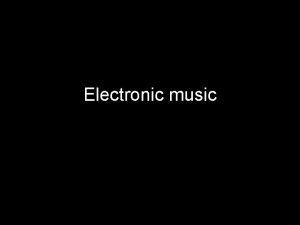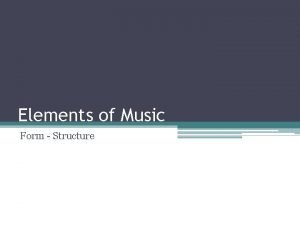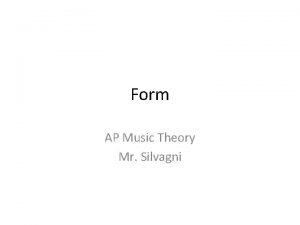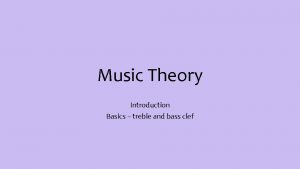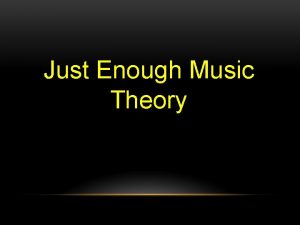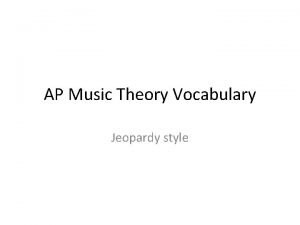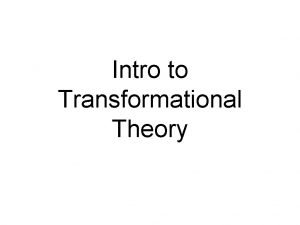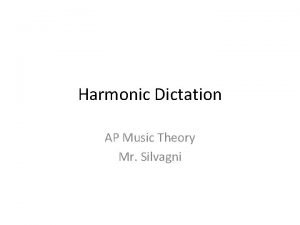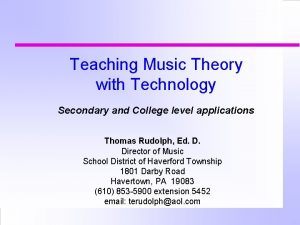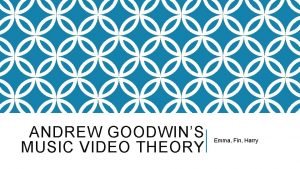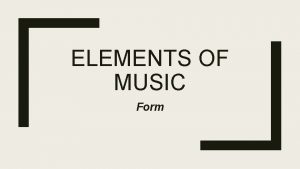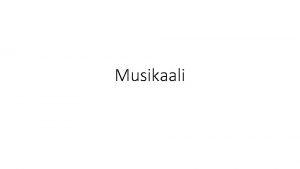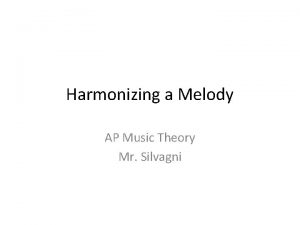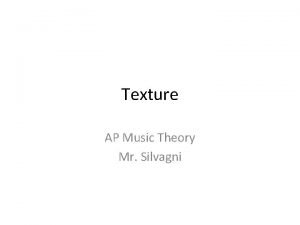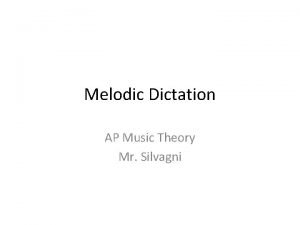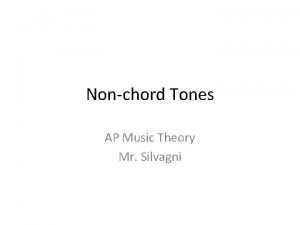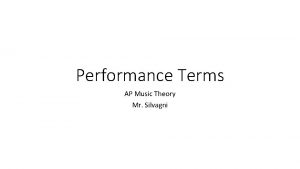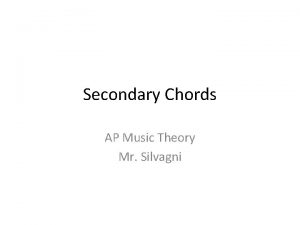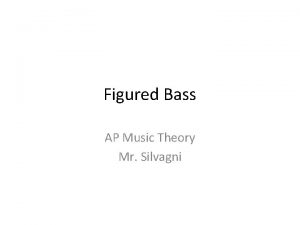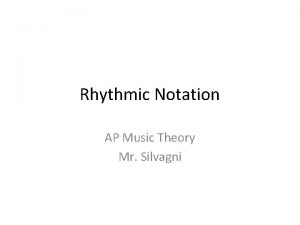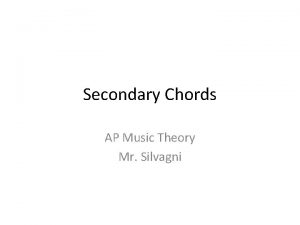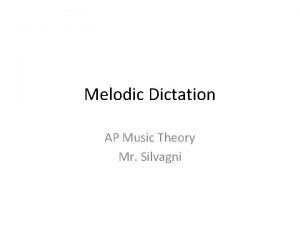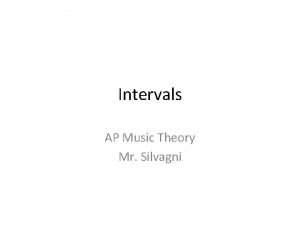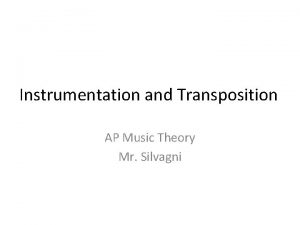Form AP Music Theory Mr Silvagni Musical Form















- Slides: 15

Form AP Music Theory Mr. Silvagni

Musical Form • Form is the analysis of phrase structure • Phrases are labeled using small letters (a, b, etc. ) • Song Form – aaba – Letters imply aa (or aa’) at the beginning is likely a parallel period and ba (or ba’) is likely a contrasting periods – One or multiple periods can be analyzed as a section of a form

Labeling Form • While lowercase letters refer to phrases, uppercase letters refer to sections of form • An A section could contain one double contrasting period (aa’bb’) • The following B period could contain all new music (cdef) • The length of the capital letter form sections depend on the length of the music • For AP Music Theory, the music lengths are short, so expect one period per capital letter A = aa’, B = bb’

Binary Form • Binary Form (AB) – two sections often repeated ||: A : ||: B : || – Could also be AA’ – Often used for dances – Sectional (closed) Binary – A section ends with an authentic cadence in original key – Continuous (open) Binary – A section ends with another cadence or with a modulation

Ternary Form • Ternary Form (ABA) – three sections with a recapitulation (return of A) ||: A : || B A – Ternary form eventually evolves into song form in popular music (on a much smaller scale) – Popular with 18 th century arias – The recapitulation of A at the end is the A section in its entirety – Can be sectional/closed (1 st A section ends on tonic) or continuous/open (1 st A section does not end on tonic) – Compound Ternary Form – each of the ABA sections are their own miniature binary or ternary forms

Rounded Binary Form • Rounded Binary Form (A B 1/2 A) – two full sections and a shorter third section ||: A : ||: B 1/2 A: || – More similar to ternary form than binary form • Repeats like Binary, but sectioned like Ternary – The recapitulation of the A section does NOT appear in its entirety – The half of A is usually the second half of A which ends with a PAC

Strophic Form • Strophic Form (AAAA) – every verse or stanza is the same music – Often seen in folk music or music that serves as background for storytelling – Also called "verse-repeating" or chorus form – Strophe means a group of verses in a poem

Through-Composed • Through-Composed (A B C D E F G etc. ) – New music for each stanza – Complete opposite of Strophic Form – Music played is never repeated once the section is changed – There can be some repetition within a section

Sonata-Allegro Form • Sonata-Allegro Form – a unique type of compound ternary form that was used in almost all Classical period sonatas in the 1 st movement – A: Exposition – First theme is in the tonic key, the second theme in the dominant key or the relative major key if the first theme is in minor – B: Development – Previously presented themes are expanded and developed, often in new keys – A’: Recapitulation – A restating of the exposition with the first and second themes both in the tonic key, often concluding with a coda

Rondo Form • Rondo Form – commonly a final movement in a classical piece – Has a principal theme that alternates with one or more contrasting themes, generally called episodes or digressions – Either five-part rondo (ABACA) or seven-part rondo (ABACABA) – Arch form rondo (ABCBA) resembles a symmetrical rondo without the intermediate repetition of the main theme

Theme and Variations Form • Theme and Variations (A A’ A’’’’, etc. ) – Has only one “section” and is repeated indefinitely – Each repetition adds variety to the main theme, unlike strophic form which is the same every time – May be an individual section of any shorter form such as binary or ternary – Passacaglia and chaconne feature a repeating bass theme (bass ostinato) over which the rest of the musical structure is written

Coda Section • A coda or codetta is the closing few measures of a composition after the PAC that is usually not part of the main thematic material • It often extends the PAC, repeating dominant and tonic chords in a powerful final conclusive manner • It is a type of cadential extension found at the end of music



 Online music portfolio
Online music portfolio Music that employs electronic musical instruments
Music that employs electronic musical instruments Romantic time period
Romantic time period Is organized into recognizable/recurring accent patterns
Is organized into recognizable/recurring accent patterns This is the ilocano name for the wind instrument
This is the ilocano name for the wind instrument Musical form definition
Musical form definition What are the musical forms
What are the musical forms Musical form
Musical form Music theory bass clef
Music theory bass clef Music theory roadmap
Music theory roadmap Music theory jeopardy
Music theory jeopardy Transformational theory music
Transformational theory music Harmonic retrogression
Harmonic retrogression Teaching music theory with technology
Teaching music theory with technology Goodwins music
Goodwins music Element of music form
Element of music form

